This is an interactive multimedia piece. After the podcast, scroll down to read the text story and engage with the interactive map.
Women in baggy t-shirts and fitted pants, slicked-back hair and high-heeled shoes wait in line for a packed bar studded with pride flags and consent signs, signaling that this is a safe space for any lesbian woman.
The scene sounds perfect for a modern queer woman looking for a fun night out around like-minded people. The problem, though, is that this scene no longer exists in Los Angeles. In 2017, Los Angeles lost The Oxwood Inn, its last lesbian bar. The windowless dive bar was nestled in Van Nuys for 45 years before the owner closed its doors. Before then, Boyle Heights lesbian bar Redz shut its doors in 2015, and West Hollywood lesbian bar The Palms closed down in 2013. Since then, not one designated lesbian bar has entered the queer nightlife scene in the city.
“All these bars started disappearing, but especially lesbian bars, because there were so few in general,” says V Craig, a queer-identifying Los Angeles native. “There was like this domino effect over the course of a few years.”
The trend of dwindling lesbian nightlife is not unique to Los Angeles, as America went from having 200 lesbian bars in 1980 to only 21 lesbian bars today. With the COVID-19 pandemic shutting down nightlife spots all across the country, the lesbian bar scene has not had a chance to fully recover. Queer woman-centered nightlife in Los Angeles is slowly beginning to creep back up, though, as many established nightlife spots are hosting specific nights dedicated to queer women. This pop-up-style scene is looming over the horizon, with more and more dedicated nights spurring up around the city.
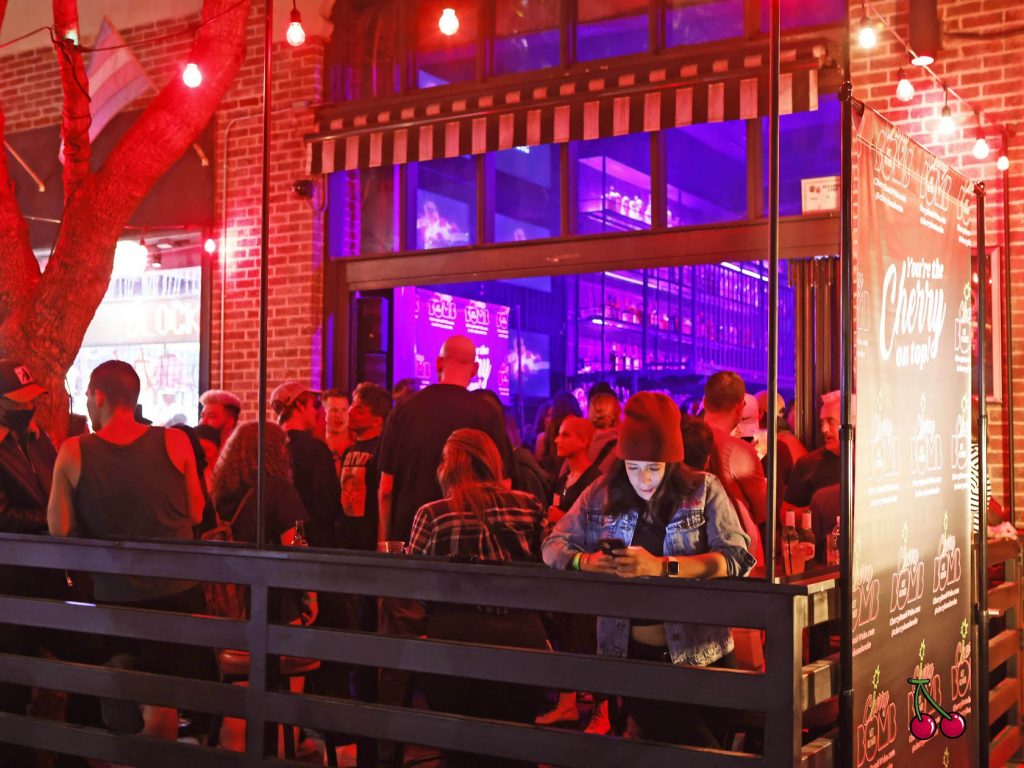
Cherry Bomb WeHo is a pop-up group that recently entered the lesbian nightlife scene in October of 2021. CEO Alison Freed is a lesbian herself, and creating a safe space for her community has been a top priority for her when creating this group.
“Our last party had a line around the block at 10 pm on a Thursday, which just speaks to how badly this is needed,” says Freed. “There’s the importance of this being done right, being a safe space, first and foremost.”
Freed had noticed the gap between gay establishments and lesbian establishments when she went out with friends in West Hollywood and realized that there were no designated spaces for them. She had previously attended lesbian bars in other cities, ultimately feeling like she wanted to create that same community where she lives in West Hollywood. As of now, Cherry Bomb WeHo hosts events once per month, with parties at Stache, Revolver and Beaches on Santa Monica Blvd., also known as the WeHo Strip. They also have an upcoming party at Heart and a weekend-long Pride event at Hotel Ziggy. Freed hopes to expand and eventually open a brick-and-mortar home base in the future.
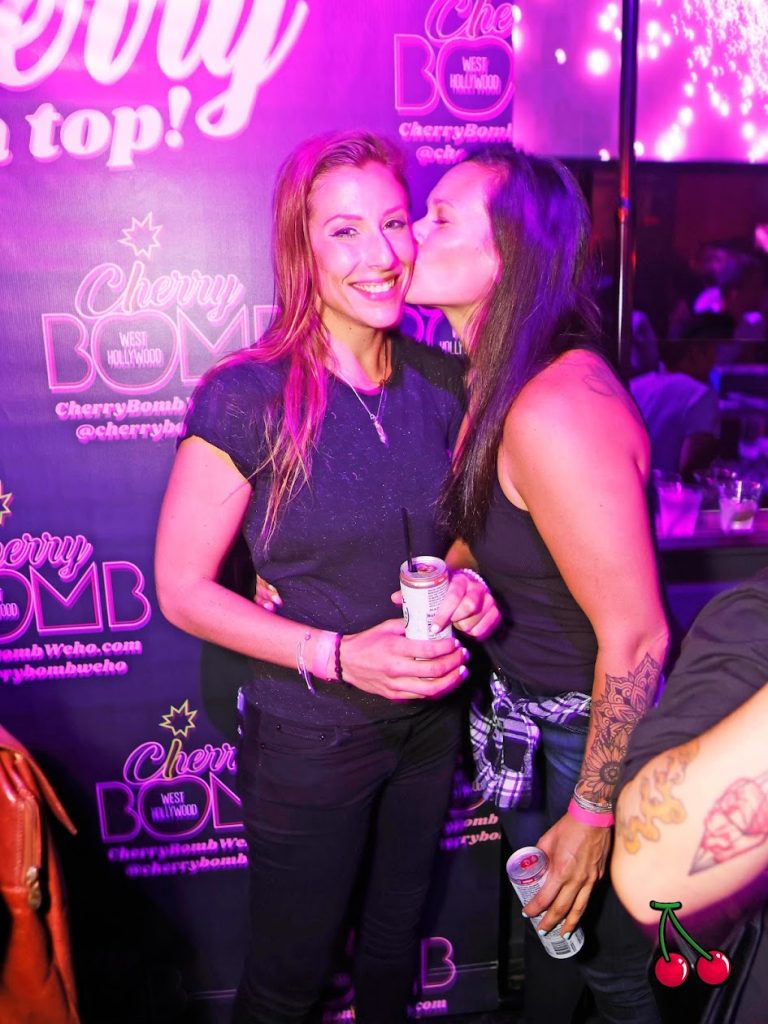
Freed is not the only aspiring lesbian bar owner who prioritizes safety at her events. Elina Street of The Lesbian Bar Project co-created a documentary about the last lesbian bars in the U.S., and she consistently discovered that each bar took utmost safety measures to make sure their clientele was protected.
“The bar owners at Herd in Alabama would walk back the patrons to their car just to make sure that security was taken care of,” she says. “Other spots used the patron’s last name on the card; they don’t use the first name because the name might not be the name that the person identifies with.”
Lesbian bar owners feel that safety measures like these are crucial to their establishments, noticing potential and lived harm on a regular basis.
“Our last party, we kicked out about 10 men, only because they were literally assaulting women,” says Alison Freed. “it’s not about them being men, I want to be very clear, it’s about the intent of an individual. If they’re celebrating the space, it is a very different vibe than if they’re coming in to be predators, they stick out like a sore thumb.”
A common roadblock that Freed and other hopeful bar owners have faced is related heavily to the rising rents of vacant businesses and the high cost of essential documents such as liquor licenses. Despite the COVID-19 pandemic opening up spaces for potential nightlife, many of the spaces stay vacant, as hopeful owners cannot meet the cost while still having a successful business.

In the past, women have faced numerous roadblocks when it comes to opening their own lesbian bars, a facet Elina Street recognized while creating her documentary.
“Learning about the race-based quotas was really a big thing that we found out when we started our film, learning about the fact that these were mostly mafia-owned businesses, they were kind of like speakeasies that were hidden away,” says Street. “Nothing was easy, a lot of it was shut down by the police and they would get huge fines as well from the city.”
Aside from rising rents and historical roadblocks, there are also systemic issues that affect women’s ability to open and maintain a steady lesbian bar.
“Gentrification is a huge factor for which the bars are disappearing and changing,” says Street. “Unfortunately, the spending power for women is lower than for men, women are moms more often than men, so that’s also a big difference.”
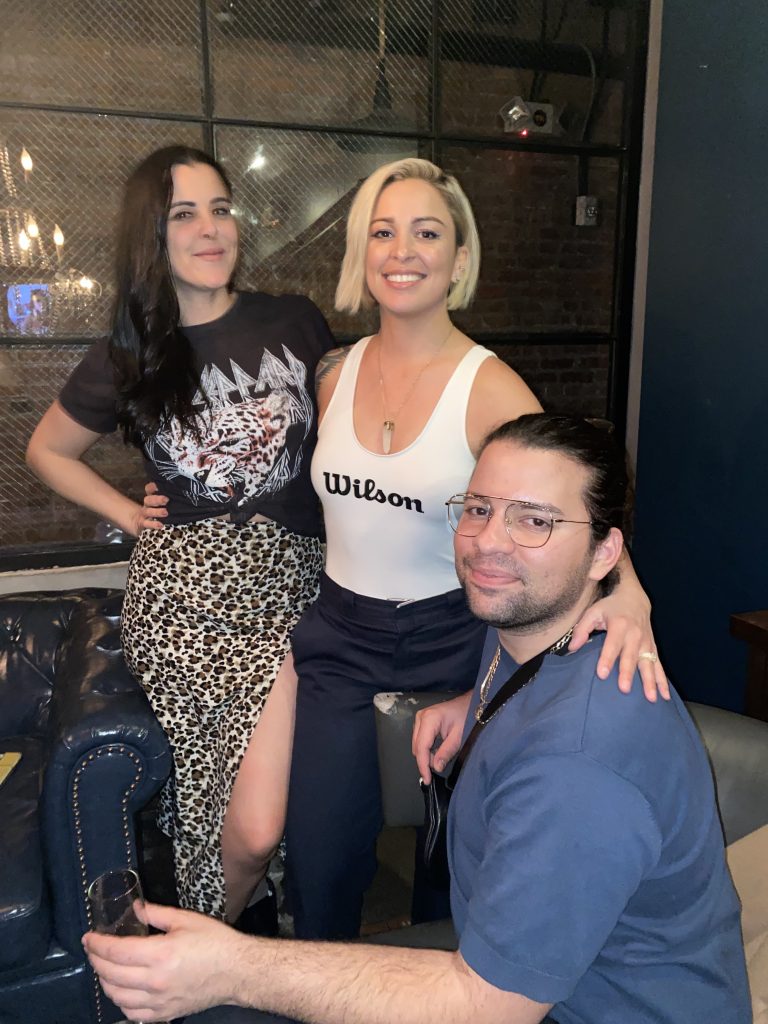
Because of these roadblocks, the pop-up format has become extremely popular among nightlife centered around queer women. One pop-up group, Below Her LA, initially partnered with a speakeasy, The Burrow, in Downtown Los Angeles, as a way to create their own queer-woman-centered nightlife in their community. Since then, they have relocated to 4100 Bar in Silverlake.
Like Freed, owners Abbey Paige and Joelle Esquivel recognized a lack of nightlife in Los Angeles that they felt welcome and safe at. They had attended events in San Diego that were centered around queer women, and they decided to start their own branch of nightlife as well. Because of the lack of bars, the two women feel that this helped them see a large turnout at their events.
“Because there are no bars in LA for queer women, it wasn’t hard starting it and getting people in, it was the opposite.” Says Esquivel. “It was like, we can’t promote this too much because if we have too many people coming we just don’t have the staff for it.”
The following section of this piece is interactive. Click on the arrows to get started.
Even though West Hollywood and other areas of Los Angeles already have designated gay bars, patrons and bar owners feel that having the word lesbian in front of the bar creates a very different environment. For bargoers, even just the term lesbian can bring an extra layer of safety that they feel is lacking in their community.
Rosemary Polito is a Los Angeles native and a longtime lesbian-identifying individual who used to occasionally frequent lesbian bars throughout the city.
“They would bring a comfort level and a safety level of I can kiss my wife, I can be close to her, I can do slow dances with her. It would be very comfortable,” Polito says. “You’re allowed to be yourself there.”
Olivia Stites is a graduating college student and queer-identifying woman who feels similarly about the increased comfortability in lesbian bar spaces.
“Lesbian bar nights have made me feel a lot more comfortable than going to just general nightlife events in LA,” says Stites. “I think it’s fun to meet people from your community that you could have the chance to talk to and flirt with, and just generally feeling like more within a community than at another type of event.”
One issue that Stites and other bargoers have had with these events, though, is that they generally occur on the weekdays.
“Having like the queer women nights on nights that are not random, like, it’s obvious that they don’t believe that there’s a big demand or that it would be a super popular night for them, since they’re not having those nights on the weekends when more people are available,” Stites says. “I think that these lesbian queer women events that have been popping up sort of show that there is a demand for that.”
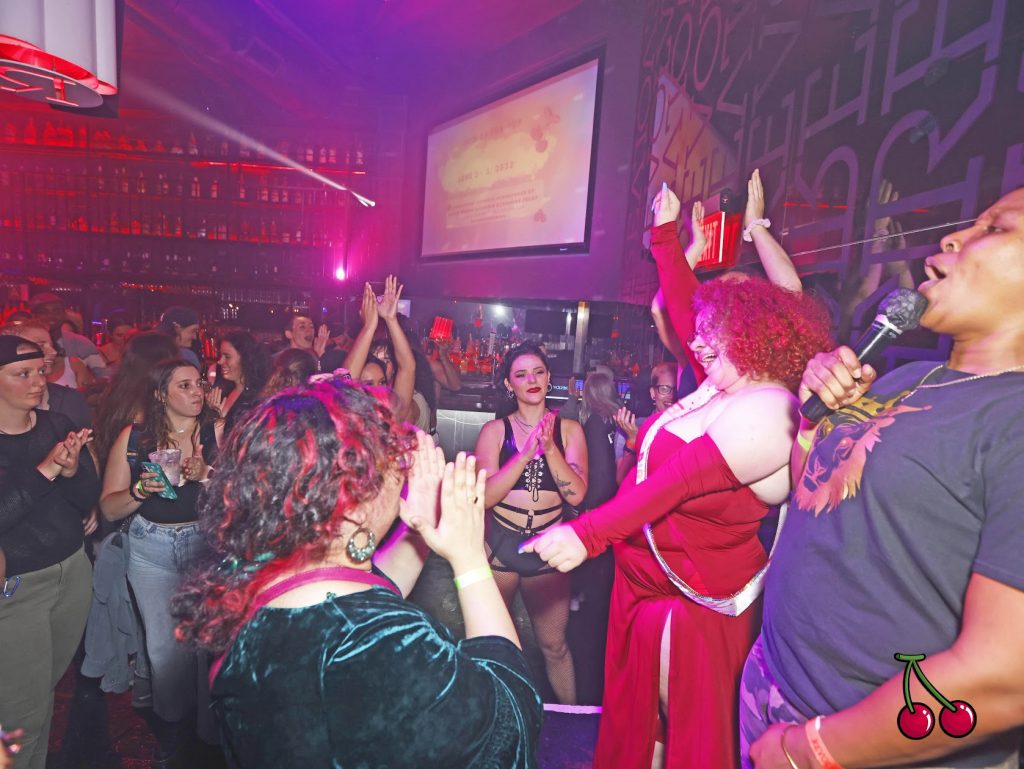
Even though many queer-identifying women and other gender non-conforming folks appreciate and see the importance of creating nightlife labeled as lesbian, a shift in the way queer people identify has caused discourse surrounding whether or not the term is outdated.
“There is a decrease of people identifying solely as lesbian, and that’s a big part of it, and that’s okay,” says Elina Street. “I think we need to keep that term, but I just think in general, people want to be more inclusive and that’s incredible.”
Street recognizes the significance of the lesbian label, as she feels that there was a time in the U.S. when it was a symbol of queer liberation.
“A lot of people weren’t identifying as lesbian because they were being repressed and they weren’t being included,” Street says. “I do think that lesbian is becoming an aging term perhaps, and that’s okay too because everything’s been changing ever since the beginning of time.”
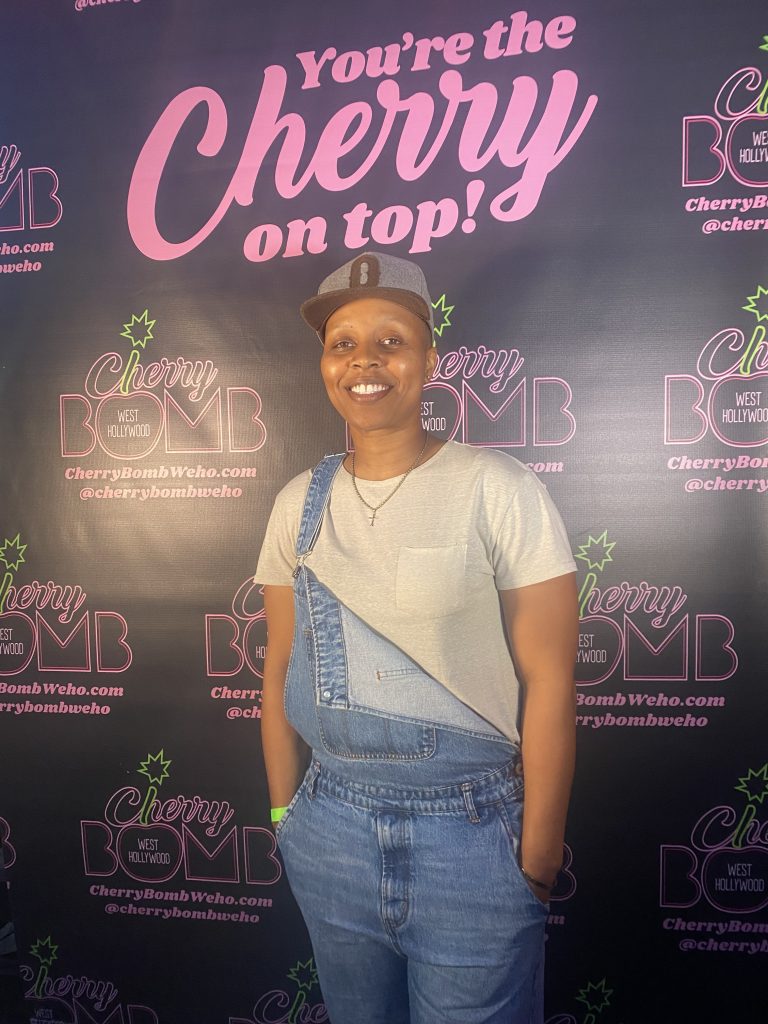
Kalea McNeill is a member of the lesbian community who feels that the term lesbian is changing with the expanding landscape, as she feels that it now encompasses a wider spectrum of people.
“There are so many things that come with lesbian, that’s not just your classic woman on woman anymore,” says McNeill. “There are so many different bullet points under lesbian, you know, lesbian, nonbinary, trans women, it’s a blanket term now.
Los Angeles native and nonbinary pop-up owner V Craig feels that the term lesbian has been very instrumental in their life.
“To me, lesbian has a deeper root for me, because I guess that was the term that you had to pick at that time. Nobody was walking around saying I’m nonbinary. I’m genderqueer I’m nongender I’m Pan,” says Craig. “It was the L the G the B and the T. Right? And that T took a while to get accepted too, so you just picked a letter.”
Despite the changing landscape, many bar owners feel that using the term is empowering, as it creates a space for marginalized groups to come and be themselves. As part of the Lesbian Bar Project, the two creators ultimately raised $150,000 which has been spread evenly throughout the remaining bars. The two women have helped spread the word about the importance of keeping this type of nightlife alive while also directly contributing to the bars’ success.
“We always ask ourselves, there are so few, do we still need them? Does this mean we still need them? I think the answer is yes,” says Elina Street. “It’s so unique to come to a place like this that caters to people like you.”
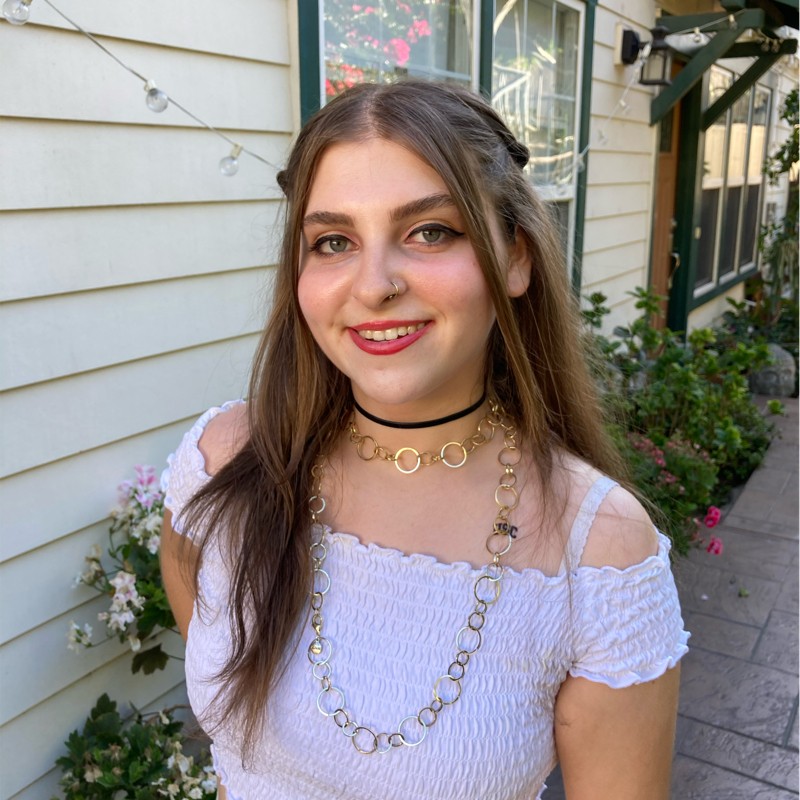
Liorah Goldsmith is a senior at USC Annenberg School of Journalism. She enjoys covering marginalized communities, mental health, women’s issues and homelessness. When she’s not working, she’s hanging out with her dog Jasper.
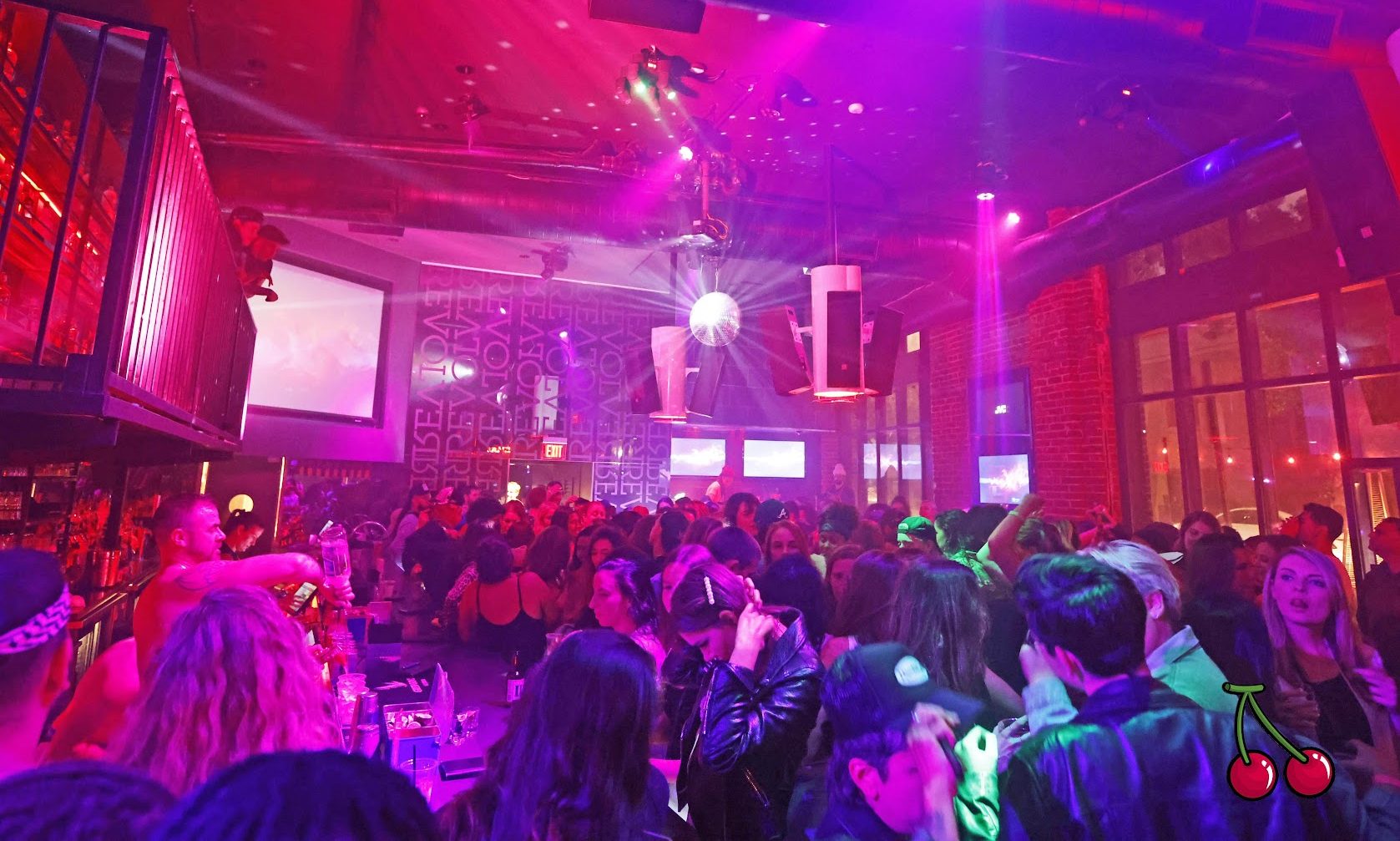
Hi there! This post could not be written any better! Looking at this post reminds me of my previous roommate! He always kept preaching about this. I most certainly will forward this post to him.